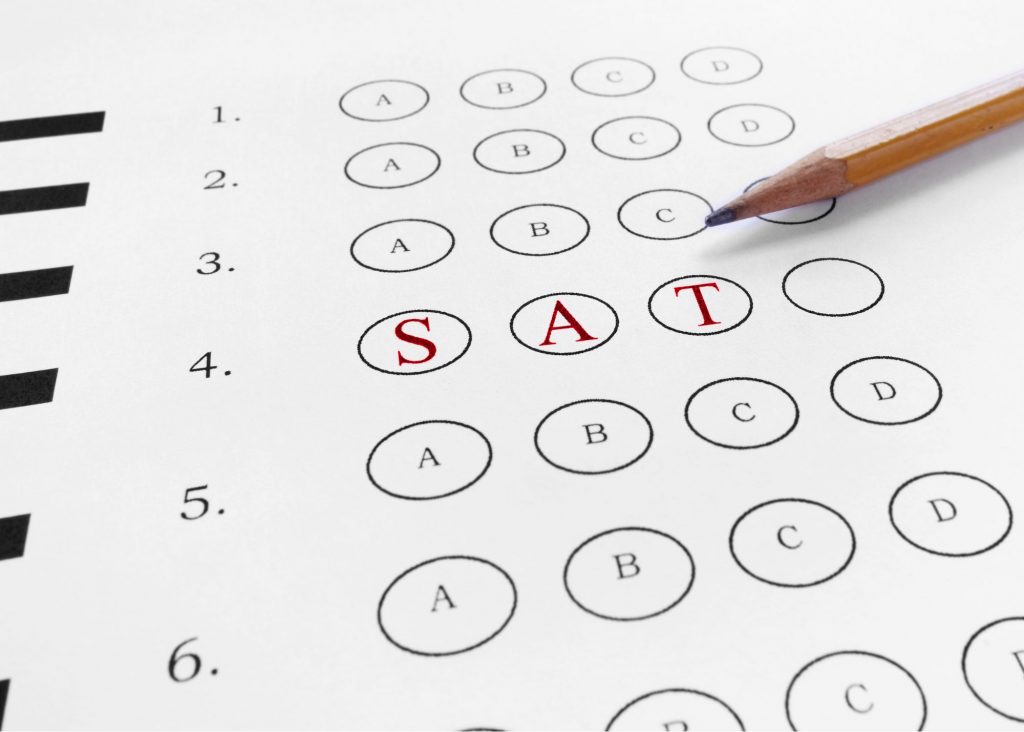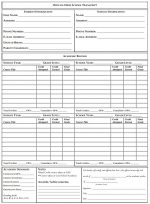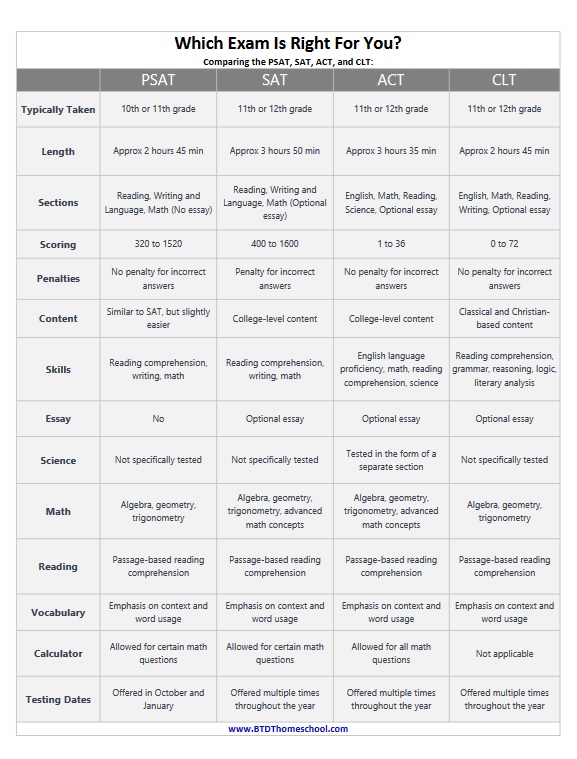
Show Notes
There are often misconceptions surrounding homeschoolers and their performance on College Entrance Exams. People tend to believe that homeschoolers lack the necessary structure and resources to excel in these exams but that’s far from the truth! Homeschoolers are rocking these exams. It’s time to shatter those stereotypes and uncover the unique strengths of homeschoolers that make them stand out in the admissions process. But why?
If you are brand new to homeschooling, be sure to visit the Getting Started Page
Here are the top 5 reasons homeschoolers are performing so well on these exams:
- Personalized learning: Homeschoolers tailor their education to their strengths and interests, focusing on subjects they’re passionate about.
- Independent thinking: Homeschooling fosters critical thinking skills and problem-solving abilities which gives them an edge on the challenges of these exams.
- Freedom to explore: Homeschoolers are not bound by a standardized curriculum, allowing them to go beyond the basics and develop a deeper understanding of subjects.
- Individualized attention: With one-on-one instruction or small groups, homeschoolers receive personalized feedback and guidance to address their weaknesses and improve.
- Genuine love for learning: Homeschooling encourages a love for learning, making the study process more enjoyable and resulting in a deeper understanding of the material.
In a world that’s obsessed with multiple-choice exams and bubble sheets, homeschoolers really do have the opportunity to break free from the shackles of standardized testing and embark on a truly personalized learning journey. They have the luxury of learning at their own pace.

One of the biggest benefits to homeschooling is not being subject to standardized tests and assessments. Of course, as you get into the high school years, and college looms in the future, standardized testing becomes a reality. For many homeschoolers, this may be their very first standardized test. As a homeschool parent, you should carefully plan your college testing strategy based on your student’s needs and their academic goals. No matter which one(s) your family chooses, it is important to prepare your student for them, in order to help them achieve the best results possible and to eliminate the stress involved. Testing can be very stressful for some students and adequately preparing them for them is a key to success. Scoring well on these tests can open the door to scholarships and entering your programs of choice in many colleges.
Homeschoolers often utilize a variety of resources and strategies to tackle these exams. They can take advantage of online courses, tutoring services, or study groups – there are even
some specifically designed for homeschoolers. Additionally, many homeschooling families encourage their children to engage in extracurricular activities, volunteer work, and internships – and these are going to provide valuable real-life experiences that enhance their overall knowledge and aptitude.
It’s important to note that colleges and universities are increasingly recognizing the unique qualities and strengths that homeschoolers bring to their campuses. Admission officers are looking beyond traditional measures of success and embracing the diversity of educational backgrounds. They understand that homeschoolers often possess remarkable qualities such as self-motivation, independent thinking, and a strong sense of responsibility.
What is the TSI/Accuplacer test? (9:58)
So, you may have heard about the TSI and Accuplacer Tests. The TSI (Texas Success Initiative) is a placement test used by colleges and universities in Texas to assess students’ readiness for college-level courses. (We live in Texas, so this is the exam our kids take.) The TSI covers three main areas: reading, writing, and math. It helps determine if you’re ready to jump right into college-level classes or if you might need some extra support in certain areas.
The Accuplacer is another common placement test used by many colleges and universities across the US. Similar to the TSI, the Accuplacer assesses your skills in reading, writing, and math. It helps colleges determine which courses are the best fit for you based on your skill level. Both the TSI and Accuplacer are usually taken before starting college to ensure you’re placed in appropriate courses. They’re not something to stress too much about. They’re designed to help colleges provide the right support and resources to set you up for success in your academic journey.
Sections of the Accuplacer test can be used for the TSI (Texas Success Initiative). The TSI test assesses students’ readiness for college-level courses in Texas, and it may include sections from the Accuplacer test. The specific sections used for the TSI can vary depending on the institution and their requirements. So, when preparing for the TSI, it’s a good idea to familiarize yourself with the content and format of the Accuplacer test, as the TSI may include similar sections. By practicing and reviewing material related to reading, writing, and math covered in the Accuplacer, you can better prepare yourself for the TSI and increase your chances of success.
For both of these tests, if you don’t score high enough in certain areas, you might have to take “pre” (not for college credit) classes in reading, writing or math before you can enroll in the college level classes (or you can go home and study a little more and retake the test until you get a high enough score). Dual credit students aren’t often eligible for Pre or remedial courses, so sometimes not passing a section of this test may not limit you from school entry, but may mean you can’t take all available classes. The Accuplacer and TSI can be taken as many times as you like, though there may be a charge.
One cool thing about the TSI is you don’t have to take every part at the same time. You have the flexibility to take each section separately and this can be beneficial especially for younger students wanting to start dual enrollment courses so they’re not overwhelmed with the one big long exam.
Often in the public schools, students take this sometime during the spring or summer of their sophomore year so they can start dual enrollment classes during their junior years. But many homeschoolers are taking this exam younger and younger. Some students take this exam following graduation if they don’t want to do dual enrollment in high school or if they plan to enter community college after they graduate. We talk about dual enrollment in depth in our last high school series episode so check that out if you want to find out more information about that.
Cost is minimal (Somewhere around $15 per section or $29, depending on the testing center). Some offer it for free. Some charge an additional $25 reservation fee. Check with your institution’s testing center for the particular school for which you’re taking the test.
Where to Find More Information and Practice Links: https://accuplacer.collegeboard.org/
What’s the difference between the PSAT, SAT, ACT, and CLT? (15:26)
One aspect of applying for college is submitting a college entrance exam score. A college entrance exam measures your achievement in core academic areas important for your college and career success. In addition to giving you an indication of your college readiness, your score can help match your interests with different majors and allow more educational and financial opportunities. These tests can be a very important part of the admissions process and can open the door to more educational and financial opportunities. Often time scholarships and merit aid are attached to test scores. While many schools have transitioned to test optional admission, especially during Covid, that might not always apply to homeschooled students.
Let’s start with the PSAT. The Preliminary Scholastic Aptitude Test is a good preparation for the SAT and can sometimes yield college scholarships for top scorers. The exam comes in 3 forms- the PSAT 8/9, the PSAT/NMSQT and the PSAT 10. The latter 2 are actually the same test, they are just taken at different times of the year. The PSAT 8/9 acts as a baseline for college readiness, while the other two are more progress based.
PSAT 8/9, 10
If you’re a homeschooler in the 8th, 9th, or 10th grade, consider registering for the PSAT 8/9 or PSAT 10. Check with local schools or test centers to find out about registration procedures and test dates in your area.
PSAT/NMSQT
The PSAT (Preliminary SAT) //NMSQT (National Merit Scholarship Qualifying Test) is like a warm-up for the big SAT exam. It’s a test that high schoolers usually take in their sophomore or junior year. Think of it as a practice round to get you ready for the real deal. But here’s the cool part: the PSAT/NMSQT also gives you a shot at the National Merit Scholarship Program. If you do really well on the test, you might just qualify for some awesome scholarships. So, it’s not just a practice run, it’s also a chance to score some serious cash for college.
The test is about 2 hours and 45 minutes long and covers reading, writing, language, and math. It’s a great opportunity to see where you stand and what areas you need to work on. Plus, you’ll get valuable feedback to help you improve for the SAT.
Homeschoolers can usually participate in the PSAT/NMSQT by reaching out to local schools or testing centers. They are sometimes legally obligated to accommodate homeschool students but can be tricky, so don’t hesitate to inquire about available test dates and registration procedures. You may also want to find out from other local homeschoolers if there is a preferred method for this- I know some of our friends have had better luck working through local private schools for this. Colleges do not see these scores, so they are just for students to gain testing experience and identify what areas they need to work on before they take the SAT.
Cost: The cost of the PSAT/NMSQT varies, so it’s best to contact the school where you plan to take the exam to get accurate fee information. It typically runs in the $18 range, but since you must order through a school, it may depend on the overall cost the school is incurring. They have to order the test for you.
Test Dates: The PSAT/NMSQT is typically administered once a year in October. However, it’s essential to confirm the exact test dates and registration deadlines with the school where you are taking it.
Scoring: Scoring range is between 320 and 1520
More Info: For more comprehensive information, check out the College Board’s PSAT/NMSQT page. They offer detailed insights into the exam and related resources.
The Parents Guide to PSAT/NMSQT
National Merit Scholarship Program
How Does the National Merit Scholarship Program Work?
National Merit Scholarship Program: The PSAT/NMSQT serves as the qualifying test for the National Merit Scholarship Program. If you achieve exceptional scores, you can be considered for prestigious scholarships. The program recognizes students who have demonstrated outstanding academic ability and potential. If you’re among the top scorers in your state, you’ll earn the prestigious title of National Merit Semifinalist. As a Semifinalist, you’ll have the opportunity to move forward and compete for the Finalist status. This involves submitting additional information, such as your academic record, extracurricular activities, and an essay. Then from the pool of Finalists, around 7,500 students are selected as National Merit Scholarship winners. These winners receive scholarship awards that can be used toward their college education. The scholarship amounts vary, but they can range from a one-time payment to renewable awards covering multiple years.
Test takers who score in the top 1% of the PSAT become Semifinalists, a significant accomplishment. Each year the NMSC awards semi finalist status to around 16,000 high school students. So some homeschool advisors do recommend taking an honest assessment here though- if you think your child has a great chance to do well on the test, go for it. If, on the other hand, you are fairly certain your kiddo is not going to score that high, you may be better off forgoing this test, and putting some time and money into solid test prep for the SAT/ACT later.
Visit the National Merit website to learn more about eligibility criteria, benefits, and the selection process.
SAT vs. ACT
Most college-bound students take either the SAT or the ACT. Both the SAT and ACT exams are important for college admissions, and some students choose to take both to have more options. They have their own unique formats and scoring systems, so it’s a good idea to familiarize yourself with the specific requirements of the colleges you’re interested in. Remember, these exams are just one part of your college application. They give colleges a snapshot of your academic abilities, but they don’t define your worth or potential. We talked a lot in our record keeping episode about other things that go into your college documents.
SAT (Scholastic Aptitude Test)
The SAT runs around 3 hours and features three subject areas – Math, Reading, and Writing. Each of the three sections is scored on a scale from 200-800. The test may include an optional 30-minute essay. SAT registration for homeschoolers is available online at the college board website. SATs are offered on school day testing and Saturday testing. Starting in the Spring of 2023 the SAT will be moving to digital format.
Unlike the accuplacer/TSI, the SAT has to be taken all at once, and in a fairly strict, monitored and stressful environment. It can be taken multiple times. Most colleges consider a student’s best section scores across all administration dates (a process called superscoring). Some may require you to send all scores; others may ask for just one. Be sure to visit the website of the college that’s right for your student and check their score policy.
When: Usually taken spring of your junior year in high school or in the fall of your senior year. We like to start in the junior year to give our students time to retake the test if they want to improve their grades,
Cost: $60 with the essay (many colleges want to see the essay- you can check and see if it is required).
How to Sign-up: You sign up for the SAT through the College Board website. The test is only given on certain dates, and in certain locations (usually at a local high school), and there are registration deadlines a couple of weeks in advance of the test.
Where to Find More Information and Practice Links: the College Board website.
ACT-American College Testing
The ACT (American College Testing) is a standardized exam that covers four main sections: English, Math, Reading, and Science. The ACT exam does have an optional writing section, which includes an essay. While the essay is not a mandatory part of the ACT, some colleges and universities may require or recommend it as part of their admissions process. So, it’s worth checking the requirements of the colleges you’re interested in to see if they require the ACT essay.
Each section is designed to assess different skills. In the English section, you’ll tackle grammar, punctuation, and writing style. Math will put your problem-solving and mathematical reasoning to the test. The Reading section involves comprehending passages and answering related questions. And the Science section examines your ability to analyze and interpret scientific data.
Now, here’s the cool part: you don’t lose points for wrong answers! So, even if you’re not sure about a question, it’s worth taking a guess.
Test Dates: The ACT exam is administered multiple times throughout the year. Check the official ACT website (www.act.org) for upcoming test dates.
When: Typically taken during their junior or senior year. It’s advisable to plan ahead and consider your college application timeline. Many students choose to take the ACT in the spring of their junior year to allow for potential retakes if desired.
Where: ACT exams are held at designated test centers across the United States and in various international locations. You can find a nearby test center by using the test center search tool on the ACT website.
Duration: The ACT exam typically takes approximately 3 hours and 35 minutes to complete, including the optional Writing section.
Scoring: Scoring range is between 1 and 36
Cost: The basic registration fee for the ACT without the optional Writing section is $66. If you choose to include the Writing section, the fee increases to $91. However, keep in mind that costs may vary, so it’s best to refer to the ACT website for the most up-to-date pricing information.
Traditionally, the ACT exam has been administered on paper. The test booklet and answer sheet are provided to students, and they fill in their responses on the answer sheet using a pencil. However, starting in September 2020, the ACT introduced an online version of the exam called the “ACT Online.” This online version allows students to take the test on a computer at designated test centers. This online version provides an alternative for test takers who prefer or require a digital format.
For more detailed information: registration instructions and resources to prepare for the ACT, visit the official ACT website.
The Princeton Review- What is the ACT?
Comparing Both Exams
SAT and ACT remain the preferred testing choices by most colleges, but how do you decide which one to take? The SAT had long been seen as more of an aptitude test whereas the ACT has been more closely associated with testing students on their understanding of their high school curriculum. While some students take both tests, experts say that isn’t always necessary, and preparing for both presents a challenge due to the differences in each test. Each requires different strategies, and it’s best to become well-versed in one instead of going back and forth between the two. To help students make their decision, you can begin by taking a full-length practice test for each exam and see which is best suited for them.
It’s easy to say take both and see what you score better on but what I would say is take both and see what you prefer. The two exams may appeal to different types of students, experts say, though it’s important students understand possible misconceptions. Because the ACT includes a science section, some say that typically leads students who excel in science and math to favor that test. The science section, however, is a combination of reading comprehension and data interpretation, experts say, adding that similar questions are embedded in other sections on the SAT. So your reading still has to be pretty high for you to understand the science in that section. One test may not be stronger for one set of kids versus another.
Also, for both tests, some students avoid the writing test, because they do not think that they are adequate writers. The reality of applying to colleges is that providing a personal writing sample will occur at some point. Even if they don’t require the writing portion of the test, colleges may require a writing test during new student orientation, or somewhere along the college application process.
SAT EXAM
- More time per question
(170 questions, 3 hours and 20 minutes)
- May have tricky questions
- Nine short sections, plus essay
- Experimental section
- No trigonometry
- No science section
- Vocabulary questions
- Guessing penalty
- The SAT tests critical thinking
and problem solving skills
ACT EXAM
- Less time per question
(215 questions, 2 hours and 55 minutes)
- Straightforward questions
- Four long sections, plus essay
- No experimental section
- Trigonometry questions
- Science section
- No vocabulary questions
- No guessing penalty
- The ACT is a content-based test
CLT-Classic Learning Test
The CLT is a relatively new college entrance exam that’s gaining some buzz. The CLT is designed to assess a student’s critical thinking, logic, and reading comprehension skills. It takes a unique approach to testing, focusing on classical literature, history, and philosophy rather than the traditional content covered in other exams. The CLT is gaining popularity among homeschoolers and students who appreciate a more classical approach to education. It’s a great option if you have a strong foundation in liberal arts and want to showcase your critical thinking abilities to colleges that recognize the CLT.
CLT8, CLT10, and CLT
The CLT8, CLT10, and CLT exams are tailored to different grade levels, with the content becoming more advanced as students progress through school. If your student is in 8th grade, the CLT8 tests your skills at a level suitable for the age and grade. For 10th graders, there’s the CLT10, which is a bit more challenging to match progress in high school. The standard CLT exam is for 11th and 12th graders, covering a wide range of subjects and assessing readiness for college.
The CLT is entirely computer-based, which means they will be taking the test online. This can be a good option for students that prefer digital interfaces and typing over traditional paper and pencil exams. The CLT exam consists of three sections: Verbal Reasoning, Grammar/Writing, and Quantitative Reasoning. There are passages to read, questions to answer, and even some essay writing. It’s a comprehensive test that challenges your student’s ability to think critically and articulate your thoughts effectively.
When: Typically taken in junior and senior years. However, it can also be taken by motivated students in lower grades who wish to challenge themselves with CLT8 and CLT10.
Test Dates: Offered multiple times throughout the year. You can check the official CLT website for upcoming test dates and registration deadlines.
Location: Designated test centers across the United States and select international locations. Visit the CLT website to find a test center near you.
Duration: The CLT exam consists of multiple sections, and the total testing time varies based on the level of the exam. Generally, it takes around 2-3 hours to complete.
Scoring: The CLT exam scoring ranges from 0 to 120. The scores are percentile-based, meaning they reflect how you performed in comparison to other test takers.
Cost: The CLT cost $54, the CLT 10 costs $44, and the CLT8 costs $34.
Sign-up: To sign up for the CLT exam, visit the official CLT website and create an account to select desired test date and location, complete the registration process, and pay the exam fee.
Visit the official website for information about upcoming test dates, registration fees, and test preparation resources.
How do I prepare my child for exams? (37:54)
BEFORE THE TEST
You might be wondering about the best way to study and when to start studying for a college readiness assessment. There are four things you should consider doing when it comes to studying for a college readiness assessment. These practices will help you build confidence leading up to the test and prevent cramming or burnout.
- Take a practice test—Taking a practice test allows you to familiarize yourself with the format and types of questions asked. After you take a practice test, note your strengths but, more importantly, identify areas for improvement.
- Plan your practice and study time—Set aside small amounts of time for studying over an extended period. Keep a calendar of your schedule, but make sure to keep it flexible for surprise homework assignments, extracurricular activities, and fun.
- Keep a positive attitude—Practice positive thinking: imagine yourself sitting in the quiet test room, bubbling your answers on the scantron, meeting the challenge of the exam.
- Take a look at test prep options—They can help you become more familiar with the test format, gain confidence, and be ready on test day.
PREPARING
Helping your child practice for the specific test they will be taking is a great way to help them improve their test scores. There are many resources available to help your student prepare. There are a lot of tests available, each with their own test dates and necessary prep.
All of the tests we have mentioned today have corresponding test study guides and books with practice tests. Khan Academy has free test prep. There are also a wide variety of test prep companies and tutors out there that can help provide services to teach your student strategies to use for the tests.
One of the best ways to help your student feel confident on test day is to make sure that they know what to expect for the test. Different tests are organized in different ways, so students need to understand the structure of the test they will be taking.
What is an Adaptive Test?
Students should also be aware of whether or not the test they will be taking is an adaptive test. Adaptive tests are customized for each student with questions that get easier or harder depending on whether or not the student is answering the questions correctly.
Adaptive tests can seem very difficult, even when students are doing very well. Students need to be prepared for this, so they don’t get frustrated by the more difficult questions on an adaptive test.
Pricing can range from free for some of the prep to being quite expensive. Don’t be intimidated if you have a small budget, you can get test prep books from the library, or even pick up these used books.
STUDY SKILLS
Homeschool parents can help their students learn study skills and strategies for success on the specific test that they will be taking.
Crash Course has an entire “Study Skills” playlist:
TEST DAY
To help your student be successful on testing day, there are a few things they should keep in mind.
BE PREPARED – Make sure you know exactly where the test center is located and how to get there before test day. You may need to arrive early, so make sure you leave enough time for unexpected delays.
SLEEP – Make sure you get a good night’s sleep before test day, so you are well-rested and energized during the test.
BREAKFAST – Eat a good breakfast before the test. This ensures that your brain is receiving all the nutrients it needs to function properly when test-taking. Eating something with protein like peanut butter is the best way to help you stay full and think clearly during the test.
CLOTHING – Choose your clothes carefully for test day. You want to make sure your clothes are comfortable and won’t be distracting. Wear layers so that you can adjust to the temperature of the room.
SUPPLIES – Make sure you bring all the supplies that you will need. Copy of registration, ID, permitted calculator, watch, pencils, snacks or drink. Bring a sharpened No. 2 pencil with a good eraser.
HYDRATE – Bring a water bottle. This can be helpful if you get thirsty during testing. If the test doesn’t allow for easy access to water bottles, make sure to take frequent water breaks anyway, as staying hydrated is important.
NO RUSHING – When test day comes, get to the test center early and take some deep breaths to relax before the test begins. Once you are on the test, Pace yourself—don’t spend too much time on a single question. Eliminate as many incorrect answers as you can, then make an educated guess. Remain calm and confident- you’ve prepared for this!
We hope we’ve given you some helpful tips and information about all the different test options out there and how to prepare your student.
It’s a step towards building confidence, evaluating your progress, and preparing for future college entrance exams.
Links

Where to Find More Information and Practice Links: https://accuplacer.collegeboard.org/
PSAT 8/9, 10
PSAT/NMSQT
National Merit Scholarship Program
SAT (Scholastic Aptitude Test)
ACT-American College Testing
The Princeton Review- What is the ACT?
CLT-Classic Learning Test
Lorem ipsum dolor sit amet, consectetur adipiscing elit. Ut elit tellus, luctus nec ullamcorper mattis, pulvinar dapibus leo.
Lorem ipsum dolor sit amet, consectetur adipiscing elit. Ut elit tellus, luctus nec ullamcorper mattis, pulvinar dapibus leo.
Lorem ipsum dolor sit amet, consectetur adipiscing elit. Ut elit tellus, luctus nec ullamcorper mattis, pulvinar dapibus leo.
Lorem ipsum dolor sit amet, consectetur adipiscing elit. Ut elit tellus, luctus nec ullamcorper mattis, pulvinar dapibus leo.

















